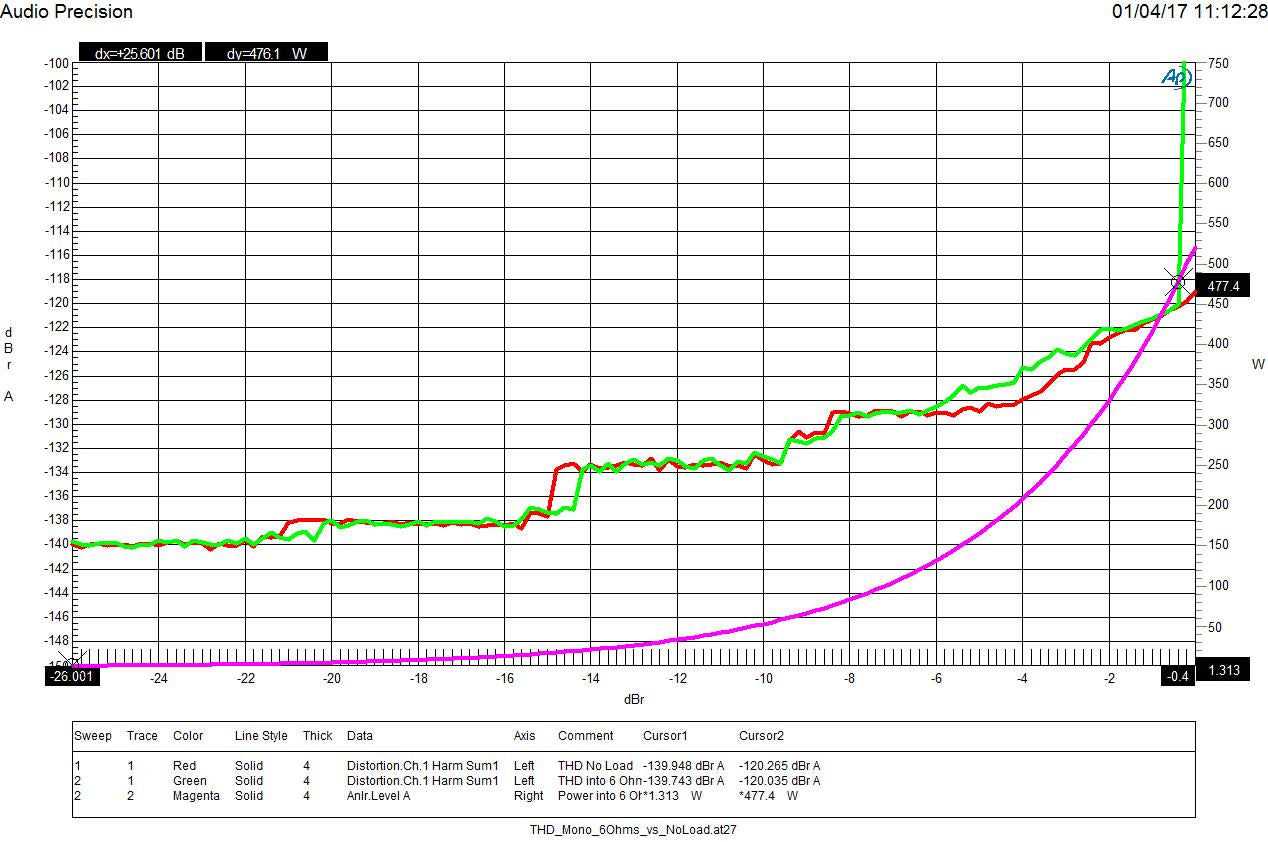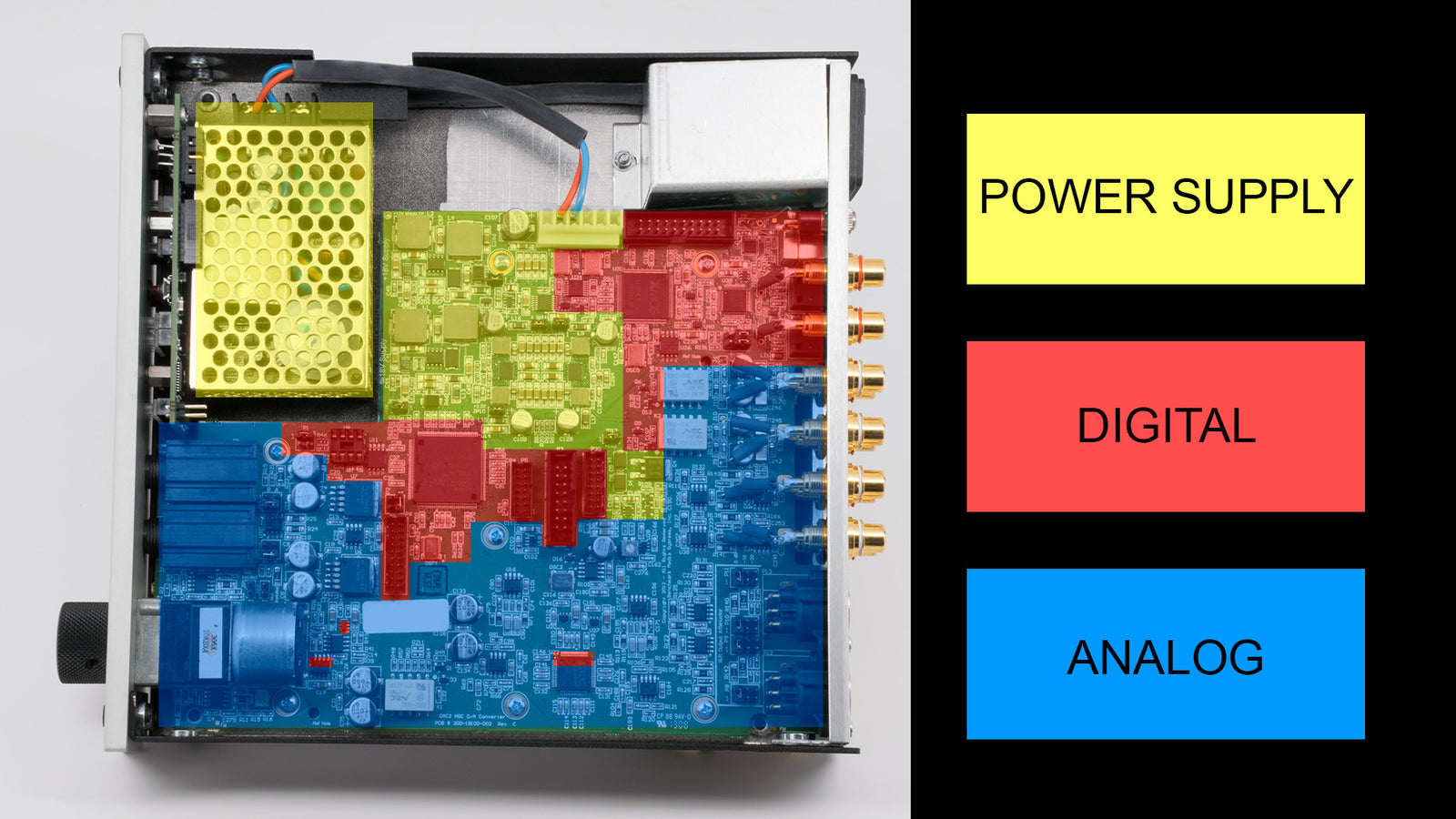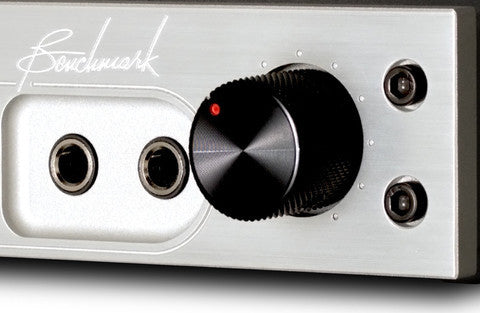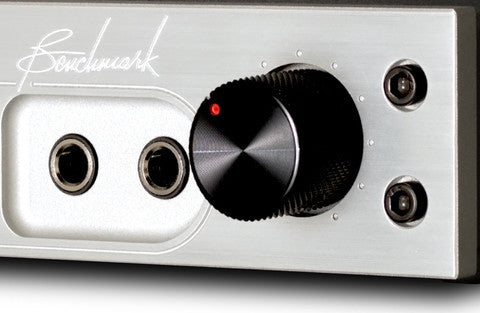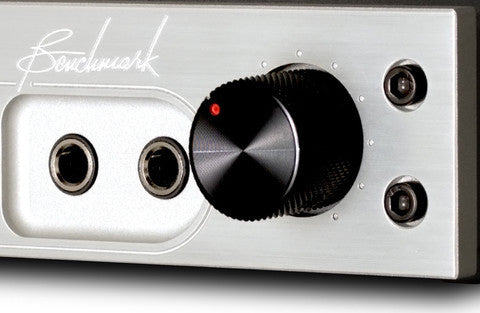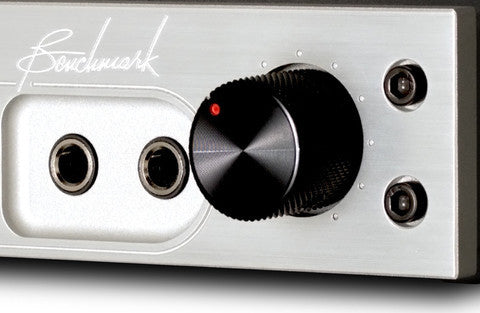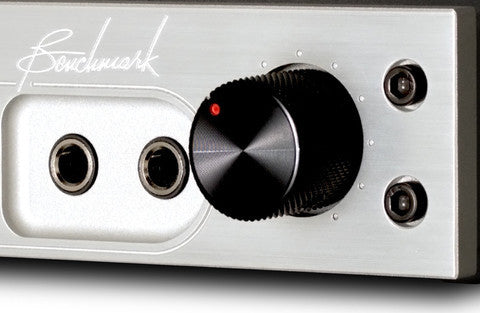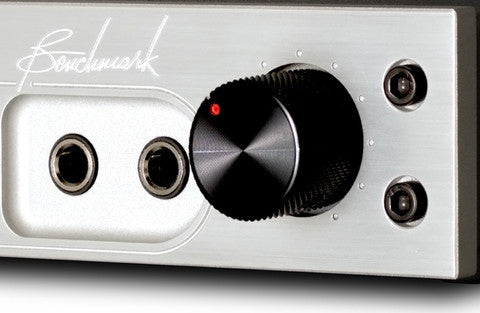 A couple years ago, some of us at Benchmark noticed a weird discrepancy between our HPA2™ headphone amp (built into our DAC1 and DAC2) and some comparably-priced headphone amps. The advertised specifications of all the amps were basically the same, but they sounded noticeably different. Benchmark launched a detailed investigation to identify the differences. The results were surprising and are detailed in a white paper...
A couple years ago, some of us at Benchmark noticed a weird discrepancy between our HPA2™ headphone amp (built into our DAC1 and DAC2) and some comparably-priced headphone amps. The advertised specifications of all the amps were basically the same, but they sounded noticeably different. Benchmark launched a detailed investigation to identify the differences. The results were surprising and are detailed in a white paper...Buy one component and save 10% on up to 2 cables. Buy 2 components and get 4 free cables. Free shipping on USA orders over $700.
Buy one component and save 10% on up to 2 cables. Buy 2 components and get 4 free cables. Free shipping on USA orders over $700.
Audio Application Notes
Feed-Forward Error Correction
by John Siau October 11, 2018
The Benchmark AHB2 power amplifier and HPA4 headphone amplifier both feature feed-forward error correction. This correction system is an important subset of the patented THX-AAA™ (Achromatic Audio Amplifier) technology. It is one of the systems that keeps these Benchmark amplifiers virtually distortion free when driving heavy loads. It is also the reason that these amplifiers can support 500 kHz bandwidths without risk of instability when driving reactive loads.
This paper explains the differences between feedback and feed-forward systems. As you read this paper, you will discover that you already understand the benefits of feed-forward correction because you use it instinctively to improve a feedback system commonly found in your automobile. If feed-forward correction can improve your driving experience, it may also improve your listening experience!
- John Siau
Audio Myth - Balanced Headphone Amplifiers are Better
by John Siau September 15, 2016
THIS MYTH GOES SOMETHING LIKE THIS:
"Balanced headphone amplifiers are better."
"If balanced line-level connections work well, balanced headphone outputs should also work well."
We disagree!
Benchmark does not offer balanced headphone outputs on any of its products. The reason for this is that a voltage-balanced interface serves no useful purpose when driving headphones. The truth is that a conventional single-ended headphone drive is technically superior to a balanced drive. This paper explains why single-ended headphone amplifiers are inherently more transparent than balanced headphone amplifiers.
-John Siau
Inside the DAC2 - Part 1 - Analog Processing
by John Siau June 04, 2016
The DAC2 is an audio digital-to-analog converter. Most people focus on the word "digital" and assume that all of the "magic" happens in the digital processing, but nothing could be further from the truth! A look inside most audio converters would show that about 90% of the components are analog!
This application note takes a look at the analog processing in Benchmark's DAC2 D/A converter.
- John Siau
Will the HPA2 Drive My Headphones?
by John Siau February 04, 2016
Benchmark DAC1 and DAC2 converters are equipped with Benchmark’s HPA2™ headphone power amplifier. This is a high-current design with very low output impedance (less than 0.1 Ohms). It is capable of driving a wide variety of headphones while achieving extraordinarily low distortion. The full rated performance of the DAC is achieved at the headphone jack while driving two sets of headphones. THD+N is less than 0.0003% under full load. The HPA2™ may be the quietest and cleanest headphone amplifier available.

- John Siau
The HPA2™ Headphone Power Amplifier
by John Siau July 22, 2015
Why do I need a Power Amplifier to Drive My Headphones?
Many Benchmark products include our HPA2™ headphone power amplifier. Unlike most headphone amplifiers, the HPA2™ is designed to behave like a small but very clean power amplifier. What makes the HPA2™ different, and what do we mean when we say that the HPA2™ is a "power amplifier"?
- John Siau
Don't Blame the Headphones!
by John Siau July 25, 2014
Headphones Sounding Bad? It Could be Your Headphone Amplifier!
It is easy to build a headphone amplifier that produces sound. It is an entirely different matter to produce an amplifier that is clear, clean, and enjoyable.
Headphone amplifiers need to provide enough voltage and current to achieve a suitable listening level. They must also be able to cleanly deliver the required output. Furthermore, they need to be able to control the transducers.
If these goals are not achieved, a good set of headphones can sound bad.
- John Siau
Headphone Impedance and Sensitivity
by John Siau May 05, 2014
- Is headphone impedance important?
- What is headphone sensitivity?
- Which headphones will work best with my new headphone amplifier?
- Which headphones will work best with my portable device?
This application note addresses these common questions and presents some guidelines for selecting headphones with the proper impedance and sensitivity.
- John Siau
Headphone Amplifiers - Part 2
by John Siau March 20, 2014
It's all about control! - Headphone Output Impedance
The movement of headphone transducers must be well controlled in order to produce high-quality audio. It is easy to build a headphone amplifier that produces sound. It is an entirely different matter to produce an amplifier that is clear, clean, and enjoyable.

Headphone amplifiers need power and accuracy to achieve control. They also need to be protected from short circuits and overload conditions. The cheap, dirty, and common way to protect the amplifier is to add a series resistor between the amplifier and the headphone jack. This simple solution protects the amplifier from short circuits and overloads. Unfortunately, the resistor isolates the headphones from the amplifier, causing a loss of control. This ...
Headphone Amplifiers - Part 1
by John Siau March 14, 2014
Headphones do not Behave Like a Resistor - Beware of Misleading Specifications!
 A couple years ago, some of us at Benchmark noticed a weird discrepancy between our HPA2™ headphone amp (built into our DAC1 and DAC2) and some comparably-priced headphone amps. The advertised specifications of all the amps were basically the same, but they sounded noticeably different. Benchmark launched a detailed investigation to identify the differences. The results were surprising and are detailed in a white paper...
A couple years ago, some of us at Benchmark noticed a weird discrepancy between our HPA2™ headphone amp (built into our DAC1 and DAC2) and some comparably-priced headphone amps. The advertised specifications of all the amps were basically the same, but they sounded noticeably different. Benchmark launched a detailed investigation to identify the differences. The results were surprising and are detailed in a white paper...An Examination of Headphone Amplifier Performance Specifications
by John Siau November 11, 2011
Headphone Amplifier Whitepaper
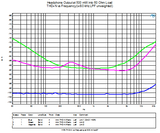 Recording Engineers and Audiophiles often distrust audio measurements and specifications. It is not uncommon to hear claims that a product measures poorly but sounds good. Occasionally we also hear claims that a product measures well but sounds bad.
Recording Engineers and Audiophiles often distrust audio measurements and specifications. It is not uncommon to hear claims that a product measures poorly but sounds good. Occasionally we also hear claims that a product measures well but sounds bad.
This whitepaper documents significant differences between three headphone amplifiers that have nearly identical published specifications.
The "0-Ohm" Headphone Amplifier
by John Siau December 01, 2001
An Introduction to "The 0-Ohm Headphone Amplifier" White Paper
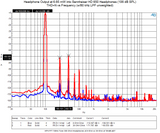 The circuits used to drive headphones are often added to a product without careful consideration of the difficult loads presented by high-quality headphones. The most common circuit is an opamp driver followed by a 30-Ohm series resistor. The series resistor provides short-circuit and overload protection while isolating the opamp from the inductance and capacitance of the headphones. The series resistor protects the opamp while keeping it stable. In contrast, today's state-of-the-art headphone amplifiers eliminate the series resistor, and use a high current driver. This change reduces distortion and flattens the frequency response when a headphone is driven. These new high-end designs are often called "0-Ohm" headphone amplifiers, and are ...
The circuits used to drive headphones are often added to a product without careful consideration of the difficult loads presented by high-quality headphones. The most common circuit is an opamp driver followed by a 30-Ohm series resistor. The series resistor provides short-circuit and overload protection while isolating the opamp from the inductance and capacitance of the headphones. The series resistor protects the opamp while keeping it stable. In contrast, today's state-of-the-art headphone amplifiers eliminate the series resistor, and use a high current driver. This change reduces distortion and flattens the frequency response when a headphone is driven. These new high-end designs are often called "0-Ohm" headphone amplifiers, and are ...


